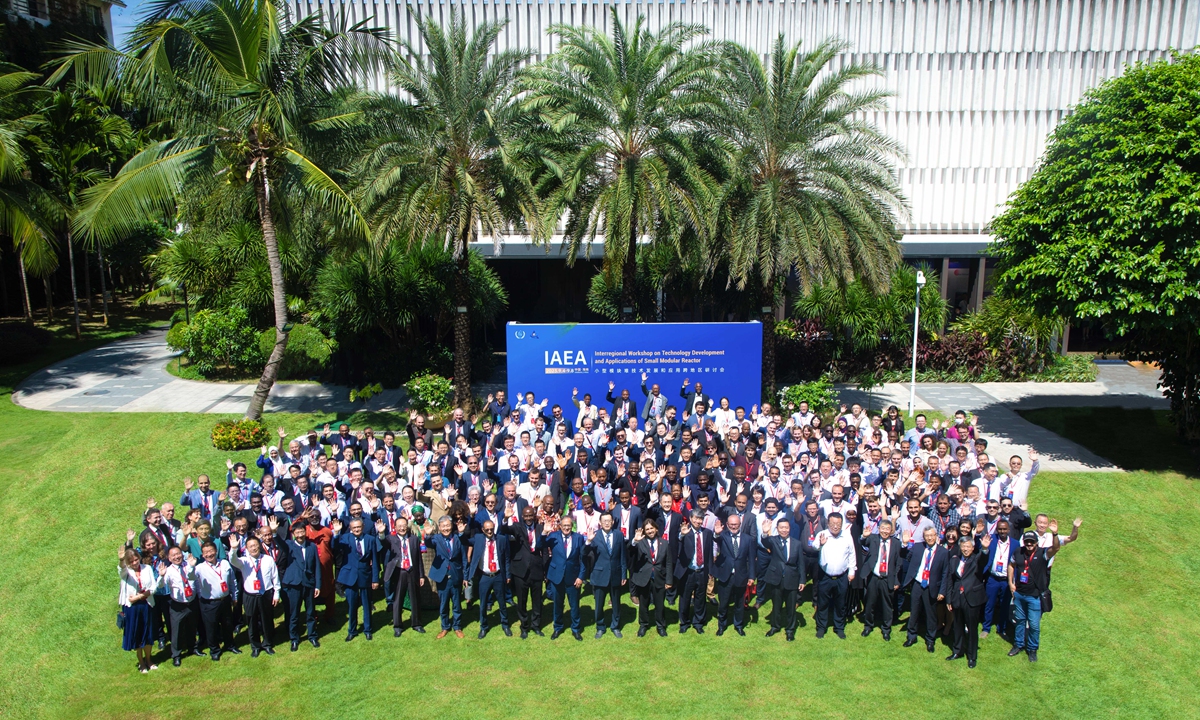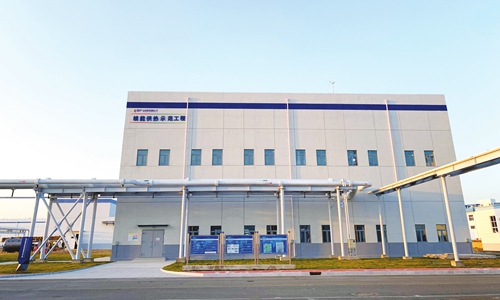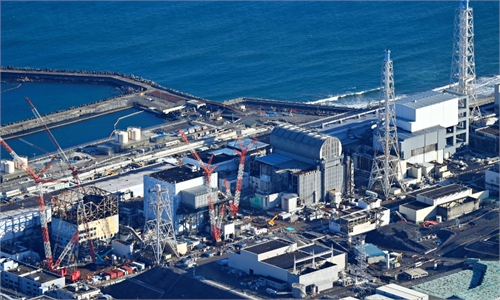
Some 200 officials and scolars from 50 regions and countries pose a picture at the Interregional Workshop on Technology Development and Applications of Small Modular Reactors on September 4, 2023, in Sanya, South China's Hainan Province. Photo: CNNC
International nuclear power industry representatives are eyeing the application of Small Modular Reactors (SMRs) to address climate change targets and diversify the energy structure within their own countries, with many favoring technology from China.
Addressing the Interregional Workshop on Technology Development and Applications of Small Modular Reactors, which is currently being held in Sanya, South China's Hainan Province, Deputy Director General and Head of the Department of Technical Cooperation of the International Atomic Energy Agency (IAEA) Liu Hua referred to SMRs as "game changers" that can allow regions and countries to deploy nuclear power rapidly and on a large scale for the purpose of mitigating climate change.
Liu said that nuclear power offers a lower-carbon energy source that is stable and environmentally friendly.
SMRs are advanced nuclear reactors that have a power capacity of up to 300 MWe per unit, which is about one-third of the generating capacity of traditional nuclear power reactors. SMRs are able to provide power for small-scale power grids, urban heating, industrial steam supply, seawater desalination and isotope production. They are also flexible in deployment, and offer high standards of environmental friendliness and safety.
According to the IAEA in 2022, there are over 80 different SMR models at various stages of development worldwide. The Global Times learned that at present, there are several SMR demonstration projects in countries including China and Argentina, and countries like the US, France and South Korea mostly are still in the design stage.
Archibold Buah-Kwofie, deputy director of the Nuclear Power Institute of the Ghana Atomic Energy Commission (GAEC), told the Global Times the interest in pursuing SMRs in Africa is high because the power grids in most African countries are small and SMRs offer an opportunity for reduced investment in grid infrastructure, which is ideal for most African countries.
"A lot of African countries are looking forward to utilizing SMRs, and also the upfront cost of SMRs compared to larger reactors is smaller. Several African countries want to use them mainly for electricity production. Ghana and some other African countries are also looking at the potential for water desalination," Kwofie said.
West Africa has one of the lowest rates of electricity access in the world, serving only about 42 percent of the total population. Nuclear power accounts for just 0.7 percent of Africa's current energy generation mix.
Alvie Asuncion Astronomo, associate scientist from the Philippine Nuclear Research Institute (PNRI), told the Global Times SMR technology is attractive for the Philippines considering its archipelagic geography and many islands that are not connected to the grid. Some regions in the country have already expressed interest in SMRs.
SMRs are also ideal given the current grid capacity of the Philippines, Astronomo said, but other nuclear power reactor technologies such as conventional Pressurized Water Reactors may also be considered.
Song Danrong, designer-in-chief of the Linglong-1 at the Nuclear Power Institute of China, told the Global Times that many countries at the meeting have expressed interest in introducing China's SMRs to their countries, including Thailand, Jordan, Morocco and Turkey.
SMRs are an ideal choice for developing countries, especially those involved in the Belt and Road Initiative due to their limited power capacity requirements, Song said. For instance, some Middle Eastern countries would use the technology for sea water desalination, he noted.
The initial investment in SMRs is relatively small. On this basis, countries that plan to introduce the technology can also train their nuclear power personnel and build up their nuclear power systems with relatively little investment, Song added.
From mining to fuel production, to the construction of nuclear power plants, to the final disposal of decommissioned nuclear fuel, the China National Nuclear Corporation (CNNC) has an entire industrial chain that can provide a complete solution for developing countries or countries with limited infrastructure, said CNNC General Manager Gu Jun.
There are more than 80 SMR designs around the world, but not many have reached the final stages, with the Linglong-1 being one of them. Coming after the Hualong One reactor, it is another innovative nuclear reactor developed by CNNC with independent intellectual property rights.
The Linglong-1, a multi-purpose, small, modular Pressurized Water Reactor (PWR), is designed for electricity production, heating, steam production or seawater desalination, also the first small modular pressurized water reactor in the world to have passed the IAEA general safety review, Song said.
Linglong-1, also known as ACP100, is one of the options being considered for potential deployment in the Philippines, Astronomo told the Global Times. With regards to the Linglong-1, Astronomo said it has seen fast progress compared to other SMRs that are under development. As an integral PWR, its simplified and proven PWR-based design is attractive, Astronomo said.
Ghana has also been collaborating with China through CNNC, Kwofie told the Global Times, adding that Ghana is dealing with various vendors through Nuclear Power Ghana (NPG). The country is looking for a strategic vendor that will partner with Ghana to build a nuclear power plant in the country.
In terms of the safety of China's nuclear power technology, Kwofie said he is confident.
"If it wasn't safe, other countries would not be relying on Chinese technology, which is certainly up to international standards in terms of safety."
China adheres to the positive, safe and orderly development of nuclear energy, and regards nuclear energy as an important choice for building a new energy system and achieving its carbon goals. Up to now, 54 nuclear power units are in operation in the Chinese mainland, and 33 nuclear power units are under construction. In 2022, 37 scored full marks on the World Association of Nuclear Power Operators' comprehensive index, Liu Jing, vice chairman of the China Atomic Energy Authority, said at the meeting.
Regarding China's nuclear technology development, Astronomo described it as "impressive." She said that she has been observing the fast deployment of nuclear power plants in China and their important contribution in reducing greenhouse gas emissions. China's nuclear power plants mostly use the PWR design, which has an exceptional industrial safety record, Astronomo noted.
Gu highlighted the urgent need to make unified global industry standards for SMR technology. The lack of unified industry standards and inconsistent demands from regulators have been hampering the promotion of SMRs thus far.



